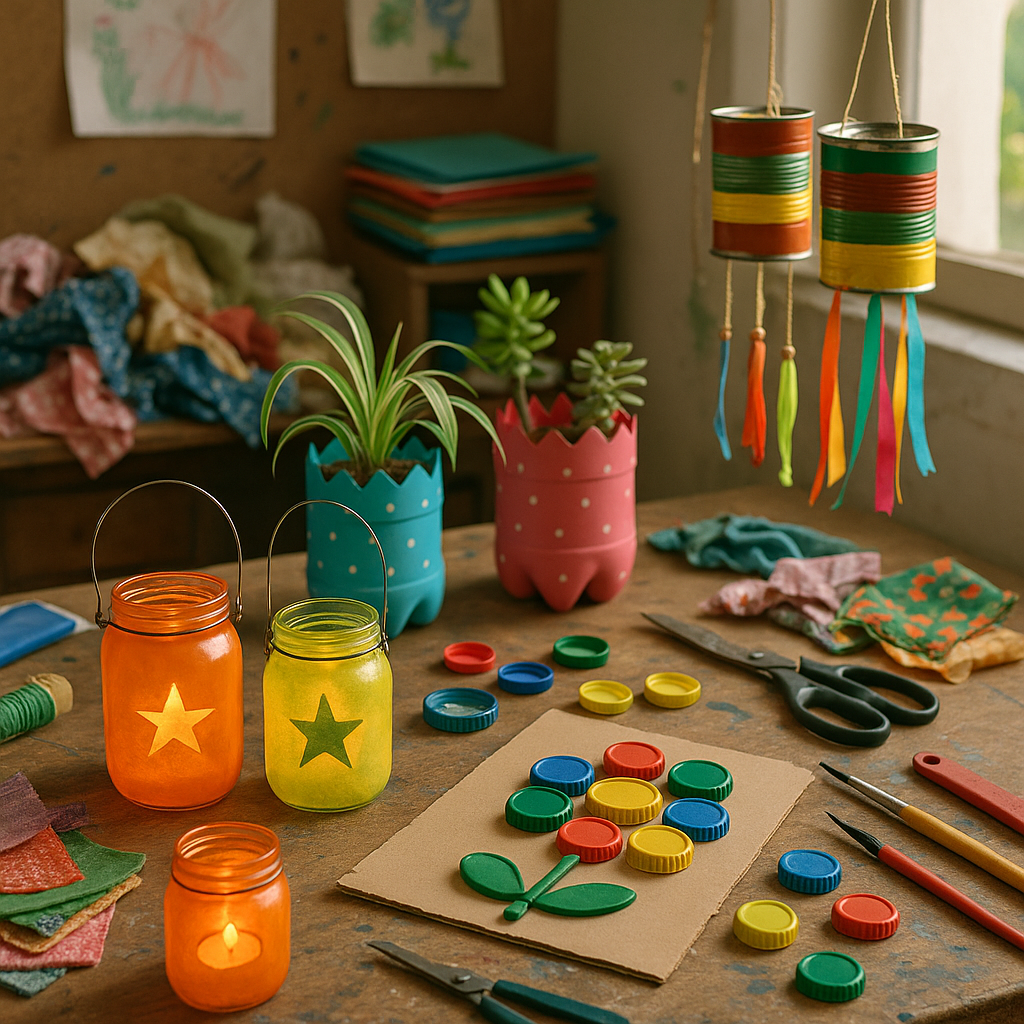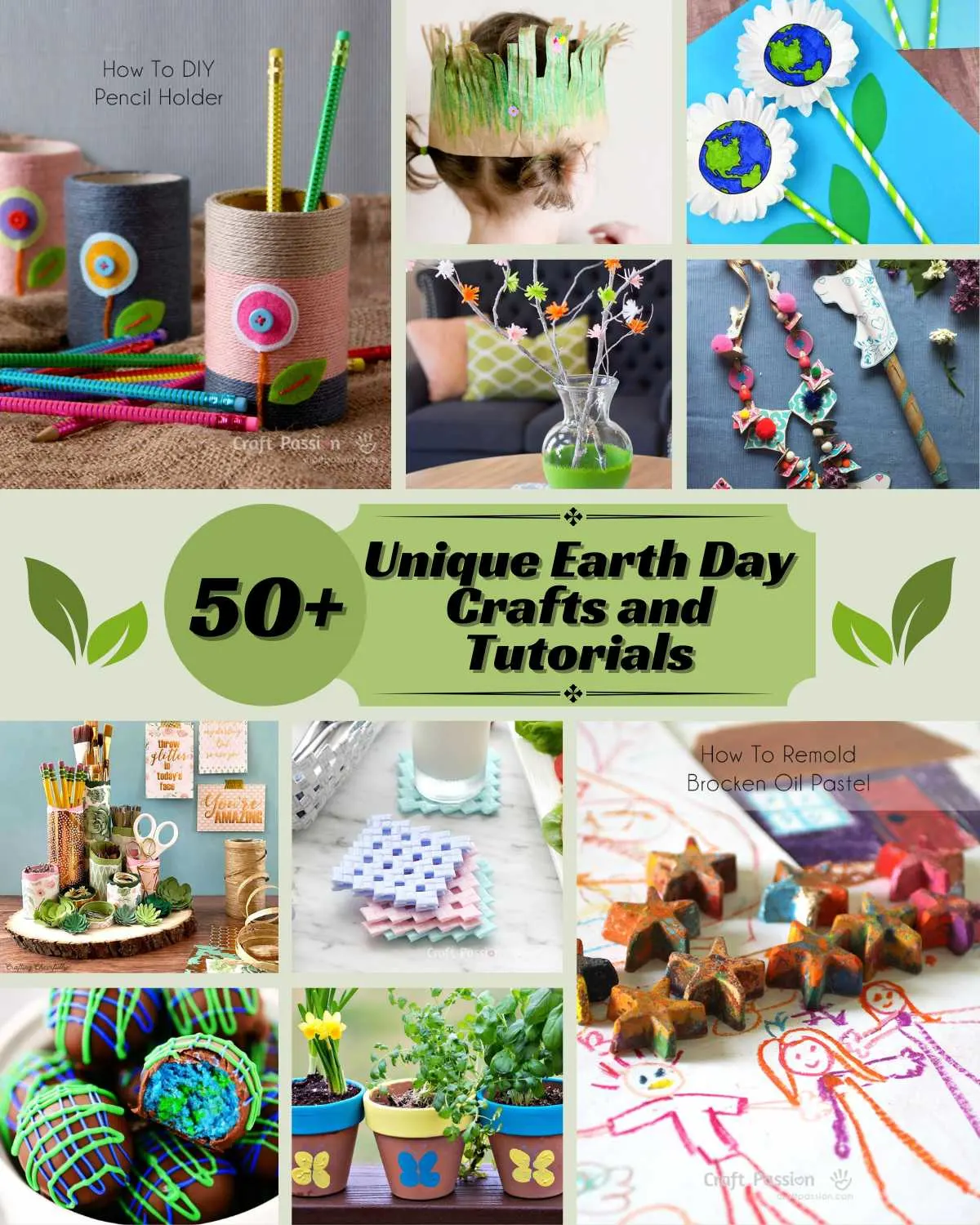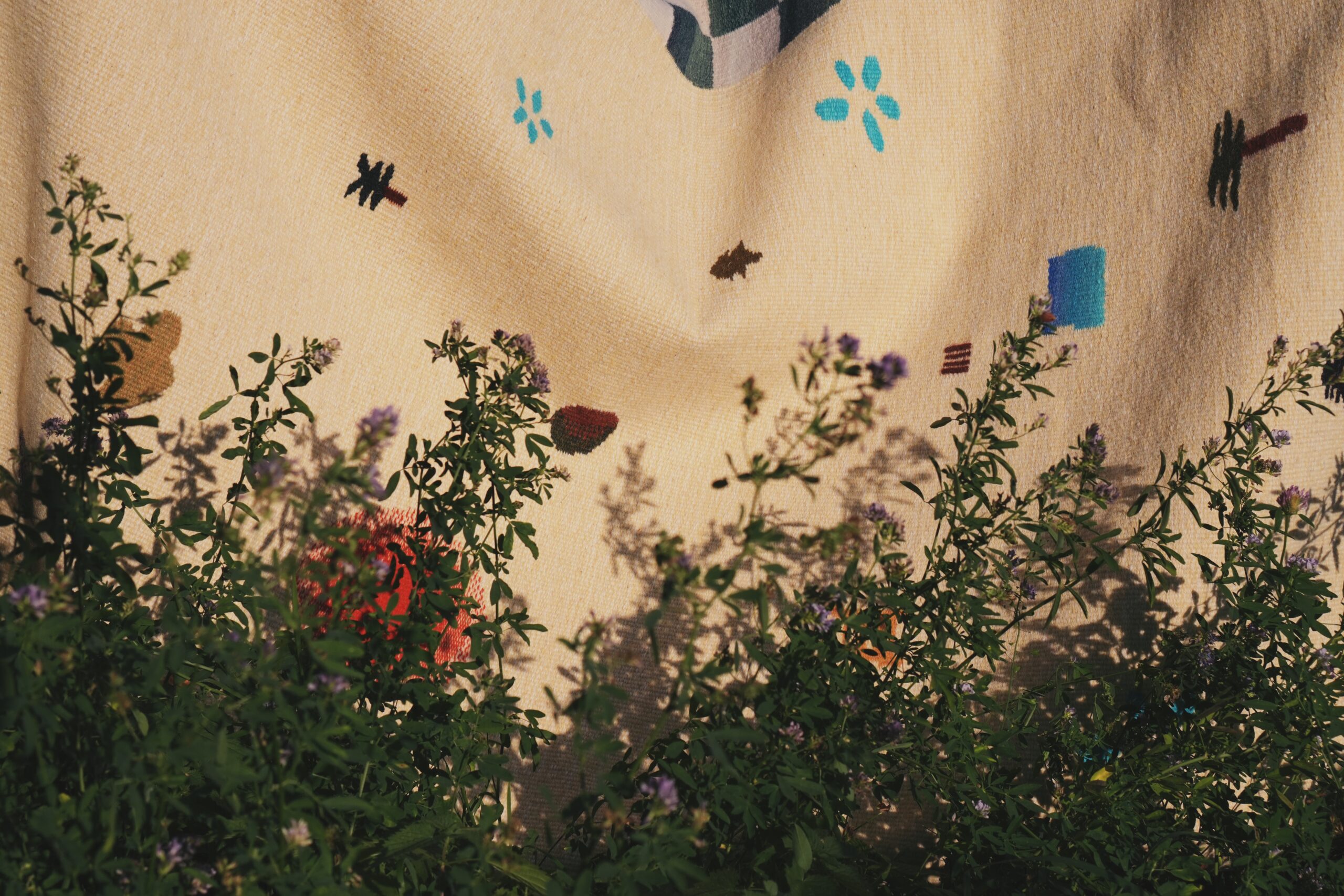Sustainable Craft Techniques: Creating Responsibly

The Rise of Sustainable Crafting
In a world increasingly attuned to the implications of climate change and resource depletion, there is a pressing need for innovative approaches across all industries, including artisan crafting. Sustainable craft techniques are growing in popularity, allowing artisans to embrace methods that protect the environment while enhancing their creative expressions. This proactive approach not only prioritizes eco-friendliness but also elevates the quality and uniqueness of handmade products.
Material Sourcing
One of the foundational principles of sustainable crafting is material sourcing. Crafters are encouraged to choose renewable resources, such as bamboo or organic cotton, which can be replanted and harvested without depleting the earth’s resources. Furthermore, many artisans are now turning to upcycled materials, giving new life to discarded items such as old furniture, glass bottles, and fabric scraps. For instance, a craftsperson might transform salvaged wood from demolished buildings into stunning furniture or art pieces. Additionally, utilizing locally sourced supplies not only reduces transportation emissions but also supports local economies, fostering community resilience.
Waste Reduction
Another vital aspect of sustainable crafting involves waste reduction. Artisans are adopting strategies to minimize waste throughout the crafting process. Techniques such as “zero-waste” pattern making in sewing can drastically cut leftover fabric. Similarly, some crafters are incorporating waste materials from other processes, like using leftover clay from pottery to craft new pieces. This ingenuity not only conserves resources but also spurs creativity—artisans are often inspired to develop new products from what might otherwise be discarded.
Eco-Friendly Tools
The tools used in crafting also play a significant role in sustainability. Emphasizing eco-friendly tools that are durable and made from sustainable materials can drastically reduce environmental impact. For example, artisans can opt for hand tools crafted from sustainably sourced wood or metal tools designed for longevity, instead of disposable plastic options that contribute to landfill waste. Investing in quality tools not only helps the planet but also enhances the crafting experience by allowing for greater precision and enjoyment in the process.
The commitment to sustainability resonates deeply with today’s consumers, who increasingly favor products that reflect their values. This growing trend in ethical crafting prompts crafters to engage with their communities and ecosystems, fostering a culture of responsibility and creativity. Events such as local craft fairs or workshops not only promote responsible production but also strengthen community ties and provide education about sustainable practices.
This vibrant movement signifies more than just a fleeting trend; it is shaping the future of crafting into one that is both creative and cognizant of environmental impacts. Are you ready to explore the rich tapestry of sustainable techniques and make a positive difference while pursuing your passion for crafting? The journey towards a greener future is filled with endless possibilities waiting to be discovered.
DIVE DEEPER: Click here to uncover more artistic expressions
Innovative Techniques and Mindful Practices
As the push for eco-consciousness grows, artisans are incorporating innovative techniques and mindful practices into their crafting processes, which aim to minimize environmental impact while maximizing creativity. Among these practices, techniques such as natural dyeing, hand-tool craftsmanship, and community-oriented workshops have emerged as celebrated methods that align with sustainable values.
Natural Dyeing
One of the most exciting developments in sustainable crafting is the rediscovery of natural dyeing. This age-old practice utilizes plant-based materials, minerals, and even insects to create vibrant colors for fabrics and papers without the harsh chemicals typically found in synthetic dyes. Common sources for natural dyes include:
- Indigo from the leaves of the indigo plant, heralded for its deep blue hues.
- Turmeric for a bright yellow shade, easily found in kitchens across America.
- Avocado pits, which yield a soft pink tone, showcasing the beauty of food waste.
Beyond their aesthetic appeal, natural dyes are safer for both the environment and the artisans, making them an ideal choice in the pursuit of sustainability.
Hand-Tool Craftsmanship
The resurgence of hand-tool craftsmanship is another hallmark of sustainable crafting. In an era dominated by mass production, skilled artisans are returning to more traditional methods of creating with their hands. This not only results in unique, one-of-a-kind pieces but also reduces the carbon footprint associated with the manufacturing and transportation of goods. Examples of hand-tool techniques include:
- Hand carving wood into intricate designs, preserving the natural beauty of each piece.
- Hand sewing and embroidery techniques that eliminate the need for electricity-driven machinery.
- Glassblowing, which repurposes cullet (recycled glass) to create stunning art while cutting down on waste.
This mindful approach to crafting fosters deep connection to the materials, reinforcing a sense of responsibility towards the planet.
Community Engagement and Workshops
Moreover, sustainable crafting is profoundly linked to community engagement. Artisans are recognizing that sharing knowledge and skills through workshops not only nurtures creative growth but also empowers individuals to embrace sustainable practices. Workshops focused on:
- Upcycling furniture into new masterpieces.
- Creating organic skincare products using sustainable ingredients.
- Making eco-friendly home goods from recycled materials.
These events often foster collaboration among community members and create a platform for discussing the importance of sustainability. By engaging in these activities, artisans build a network of like-minded creators dedicated to crafting responsibly.
Ultimately, the movement towards sustainable craft techniques emphasizes the ability to create meaningfully while being attuned to our environmental responsibilities. As artisans explore new techniques and share their knowledge, they not only promote a culture of sustainability but also inspire others to recognize the impact of their craft. This rich tapestry of creativity and care challenges us all to reconsider our own crafting habits and their effects on the world around us.
Sustainable Craft Techniques: Creating Responsibly
Embracing sustainable craft techniques is not merely a trend; it is a pathway to responsible creativity and ethical production. As artisans and creators look to the future, the integration of traditional methods with modern sustainability is paving the way to a more conscious crafting community.
| Category | Advantages |
|---|---|
| Eco-Friendly Materials | Utilizes renewable resources, reducing environmental impact. |
| Community Engagement | Strengthens local economies by supporting local artisans and suppliers. |
| Waste Reduction | Promotes upcycling and recycling of materials, minimizing waste. |
| Cultural Preservation | Incorporates traditional techniques that safeguard cultural heritage. |
These techniques prove not only beneficial for the planet but also create a deeper connection between the maker and their craft, fostering a sense of responsibility and care in every creation.
By exploring and implementing sustainable craft techniques, creators can attract a growing audience that values authenticity and ethical practices in today’s market. The possibilities are endless as the world begins to appreciate the art of creation, responsibly.
DISCOVER MORE: Click here to find out how art can change lives
Material Selection and Zero-Waste Principles
In addition to innovative techniques, the choice of materials is paramount in the quest for sustainable crafting. Artisans are increasingly gravitating towards eco-friendly materials, prioritizing sustainability from the very outset of their creative processes. This approach leads to the diminished reliance on non-renewable resources and fosters a more harmonious relationship with nature. Commonly embraced materials include:
- Recycled fibers such as those derived from post-consumer textiles, which help reduce landfill waste and the demand for virgin materials.
- Organic cotton, cultivated without synthetic pesticides or fertilizers, minimizing negative environmental impacts.
- Locally sourced woods, which decrease the carbon footprint associated with transportation and promote responsible forestry practices.
By thoughtfully selecting materials that resonate with their environmental values, artisans not only enhance the sustainability of their creations but also educate consumers on the importance of conscious consumption.
Zero-Waste Crafting
Another transformative trend in sustainable crafting is the embrace of zero-waste principles. This philosophy aims to eliminate waste throughout the entire crafting process by designing items that utilize every scrap of material. Artisans are implementing this approach in various ways:
- Designing garments that can be created from a single piece of fabric, thereby leaving no leftover material.
- Utilizing remnants from prior projects to create new products, like patchwork quilts or accessories.
- Employing modular design techniques that encourage users to adapt or repair items rather than dispose of them.
Zero-waste crafting not only caters to the growing demand for sustainable solutions but also encourages a mindset shift among consumers, reminding them that every piece of material has value.
Digital Innovations in Crafting
The intersection of technology and crafting is also bearing fruits in sustainability. Artisans are leveraging digital tools to streamline their processes, reduce waste, and reach a wider audience. Technologies such as 3D printing and laser cutting are making it possible to create intricate designs efficiently while minimizing excess material usage. For instance:
- 3D-printing allows for the precise creation of intricate sculptures and functional objects using biodegradable filament, helping to reduce reliance on traditional manufacturing.
- Laser cutting can create precise patterns for sewing and crafting, ensuring that no fabric is wasted during the cutting stage.
- Digital design software empowers artisans to visualize their projects in advance, streamlining the production process and cutting down on trial-and-error waste.
This synergy of technology and artistry opens exciting avenues for sustainable crafting while appealing to a new demographic of eco-conscious consumers.
With these dynamic advancements in material selection, zero-waste principles, and digital innovations, the realm of sustainable crafting continues to evolve. Artisans are blending traditional skills with modern techniques, fostering a rich tapestry of creativity that champions responsible crafting practices. As awareness of sustainability increases, the crafting community becomes a significant player in the movement towards a more eco-friendly future.
DISCOVER MORE: Click here to learn about the benefits of music lessons
Embracing a Sustainable Future in Crafting
As we’ve explored the innovative landscape of sustainable craft techniques, it’s evident that a profound transformation is underway within the crafting community. By consciously selecting eco-friendly materials, artisans elevate their craft while promoting responsible consumer habits. The emphasis on practices such as zero-waste principles not only minimizes environmental impact but also cultivates an ethos of value in every scrap of material used.
The integration of digital technologies into traditional crafting further enhances sustainability. Tools like 3D printing and laser cutting facilitate precision and efficiency, allowing creators to push boundaries while reducing waste. This convergence of modern technology and age-old artistry presents a unique opportunity to appeal to a new generation of eco-conscious consumers, fostering a broader appreciation for sustainable creations.
Ultimately, the movement towards sustainable crafting beckons for continued education and awareness. By championing crafts that respect and honor the environment, artisans hold the power to inspire change beyond their immediate circle, influencing a wider audience towards conscious consumption and responsible practices. As this trend gains momentum, it heralds a future where craftsmanship is not only a form of self-expression but also a catalyst for environmental stewardship.
As we embrace this journey into responsible crafting, let us remain curious and committed to discovering new methods, materials, and ideas that enhance the sustainability of our creative practices. Together, we have the opportunity to craft a more mindful world, one project at a time.


